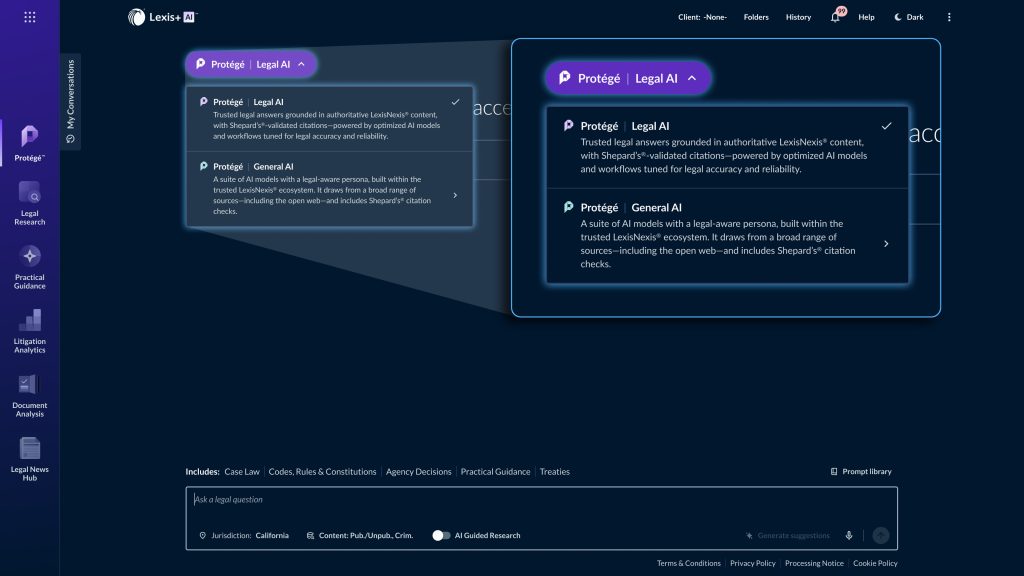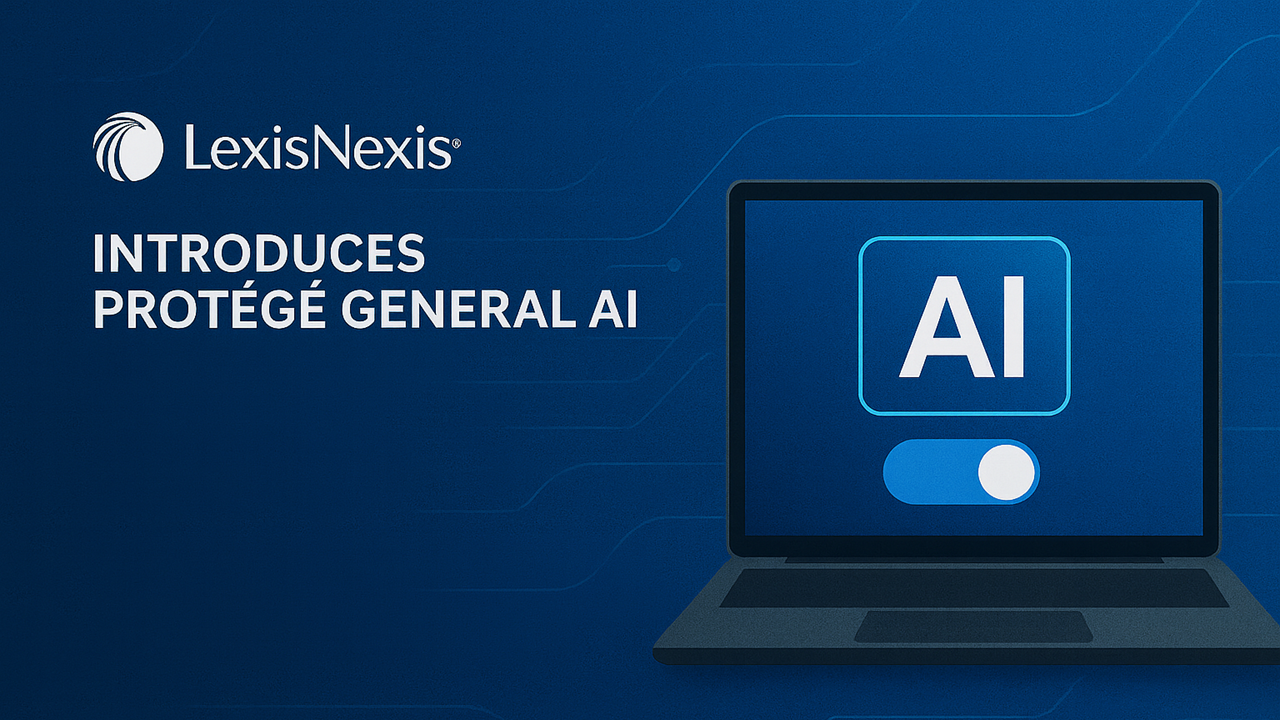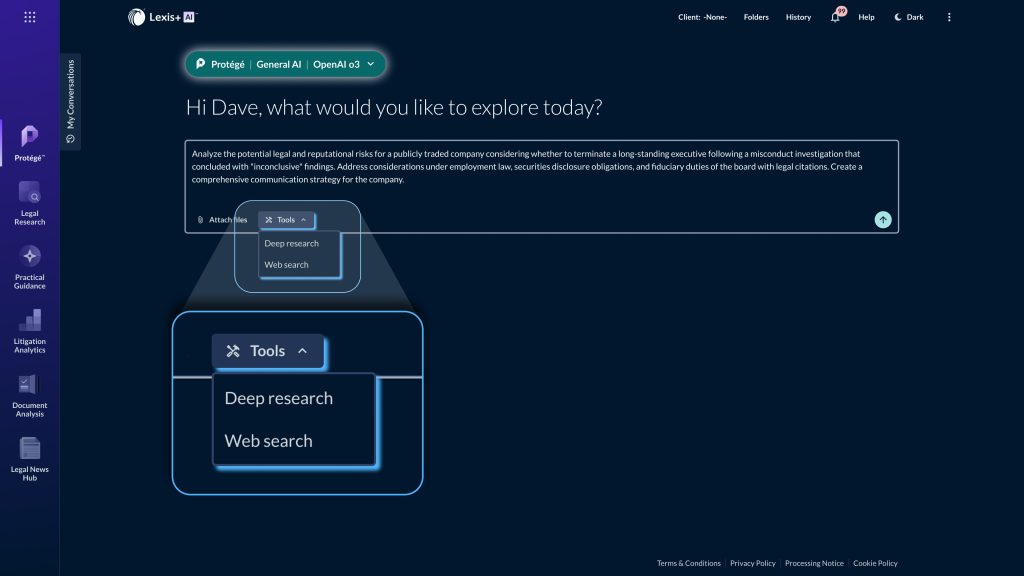LexisNexis Legal & Professional today introduced Protégé General AI, expanding its artificial intelligence platform to include secure access to multiple general-purpose AI models alongside its existing legal-specific AI tools.
This eliminates the need to switch contexts between legal-specific and general-purpose AI tools and provides a higher degree of security when using the general tools.
Launched as a preview version for U.S. customers, it allows legal professionals to access models including OpenAI’s GPT-5, GPT-4o, and o3, as well as Anthropic’s Claude Sonnet 4, all within the company’s existing Lexis+ AI workflow. Users can switch between general-purpose and legal-specific AI with a toggle function.
The new general AI capability works alongside Protégé Legal AI, which uses multiple legal-tuned models including GPT-4o, GPT-4.1, Claude 3.7, Claude 4, fine-tuned GPT-4o-mini, and fine-tuned Mistral. The legal AI version grounds responses in LexisNexis legal content and validates citations through Shepard’s citation service.
Protégé General AI draws from open-web sources and is designed for tasks including research, drafting communications for both legal and non-legal audiences, and breaking down complex problems. The system includes a Shepard’s Citation Agent that checks legal sources included in general AI responses.
Different Models, Different Strengths
According to LexisNexis, each general AI model offers specific strengths when used for legal work:
- GPT-5 combines general and domain knowledge with reasoning and non-reasoning capabilities.
- Claude Sonnet 4 offers a natural fluency that provides well-structured responses for everyday tasks, communications and brainstorming.
- GPT-4o is good for everyday tasks such as general exploration, brainstorming, and web-based information integration.
- OpenAI o3 optimizes for deep research, strategic decision-making, and complex problem-solving.
Agentic AI Framework
Meanwhile, Protégé Legal AI, built on the proprietary LexisNexis agentic AI framework, provides agentic workflows specifically developed for legal work.
One of these, the AI Guided Research Workflow, includes an Orchestrator Agent that breaks down complex queries, a Legal Research Agent that allows real-time user guidance, and a Reflection Agent that reviews final responses.
Some agents function as generalists for research and legal questions, while others specialize in specific tasks like contract review and citation checking.
The system operates within LexisNexis’s encrypted environment, which the company says provides enhanced privacy protections compared to consumer AI tools. Organizations can disable general AI access entirely for users, and individual users can toggle the feature on or off.
Sean Fitzpatrick, CEO of LexisNexis North America, UK, & Ireland, said the development responds to customer requests for secure access to general-purpose models while maintaining control over AI behavior within legal workflows.
“Our goal is to support legal professionals with a personalized AI assistant that enables uninterrupted workflows and access to the full range of LexisNexis AI capabilities in one secure place,” he said.
Preview Program
Approximately 200 law firms, corporate legal departments, and law schools are participating in the customer preview program, which has already begun. General availability is expected later this year.
The development represents LexisNexis’s continued expansion of AI capabilities, building on agentic AI innovation the company has been developing since 2024. The company says that it employs over 2,000 technologists, data scientists, and legal experts in its AI development efforts.
LexisNexis partners with AWS, Anthropic, Microsoft, Mistral, and OpenAI for its multi-model approach, which selects different AI models based on specific use cases.
 Robert Ambrogi Blog
Robert Ambrogi Blog
